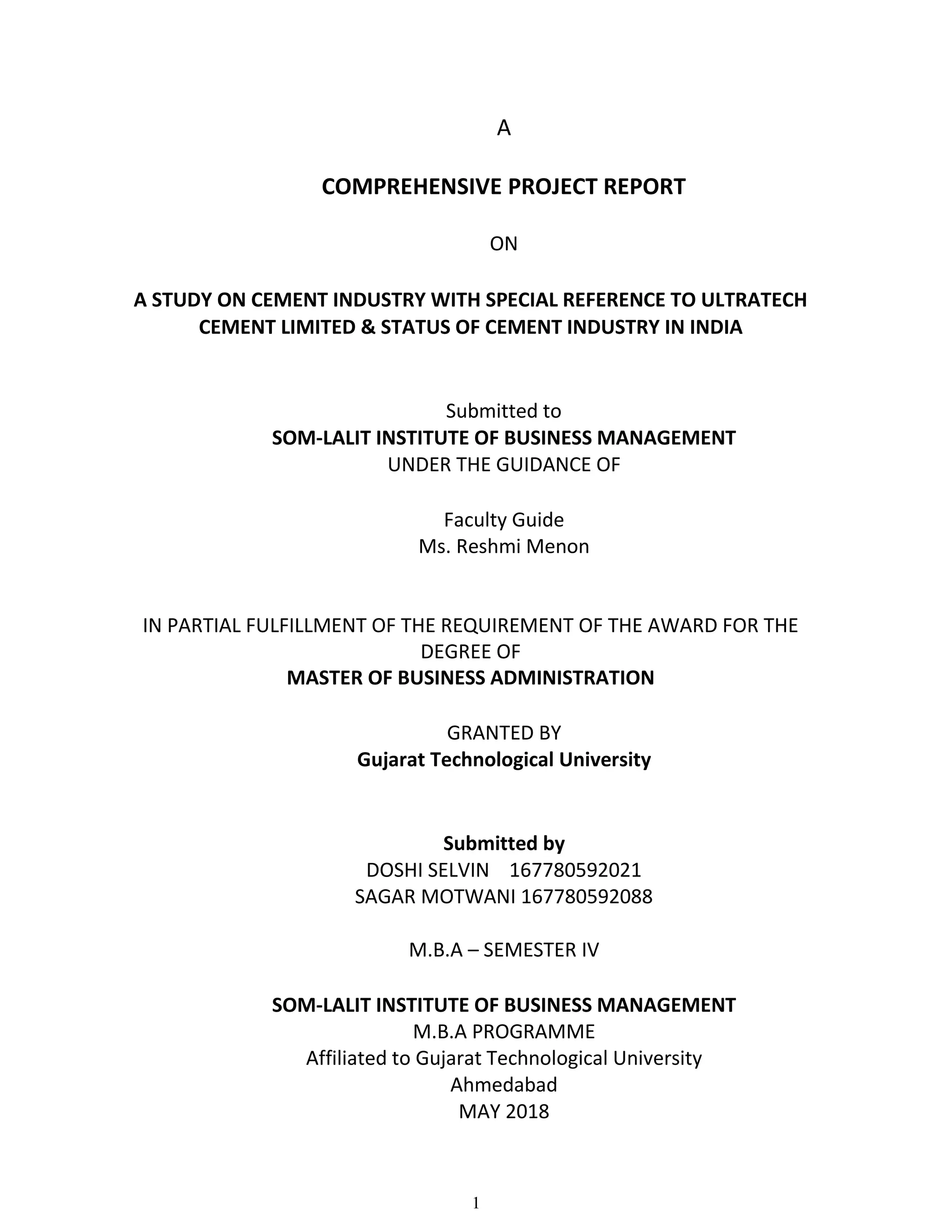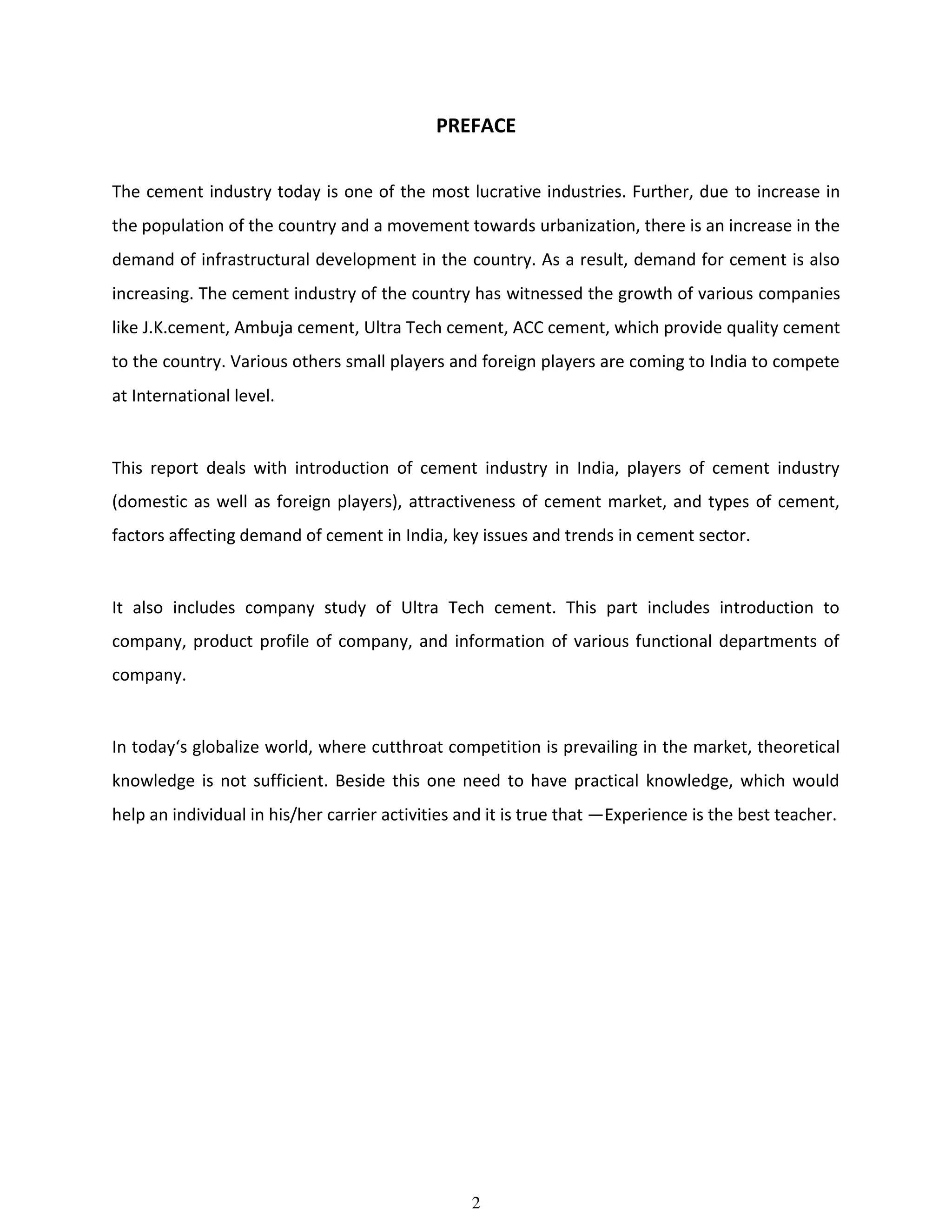This document provides an overview of the global and Indian cement industries. It discusses the key players and trends in the global cement industry, with China and India being the top producers. In India, the cement industry is the 2nd largest in the world, with annual production of 166.75 million tons. The key drivers of cement demand in India are the real estate sector and government infrastructure projects. The industry is regionally fragmented with 5 regions. Overall, the cement industry in India is growing to meet rising demand from housing and infrastructure development.
































































































